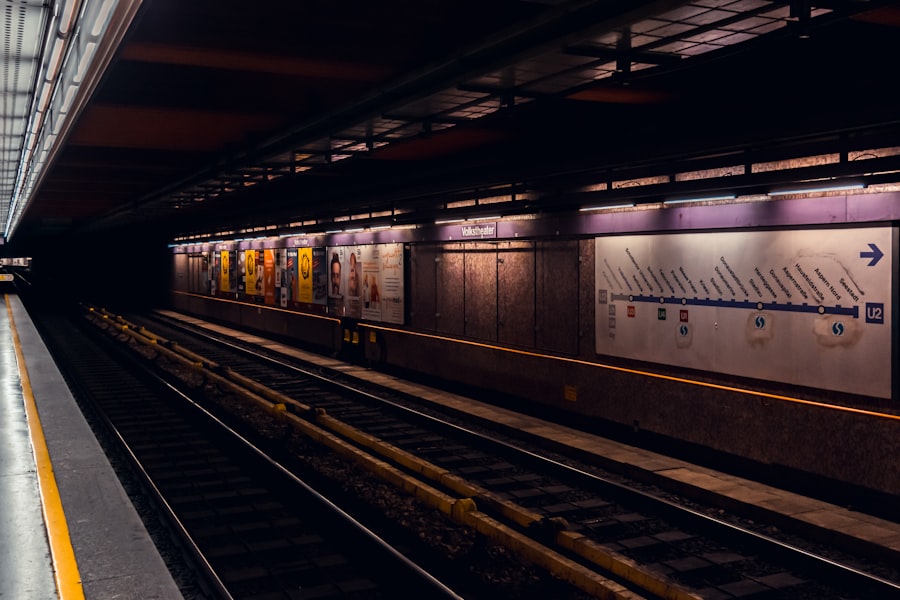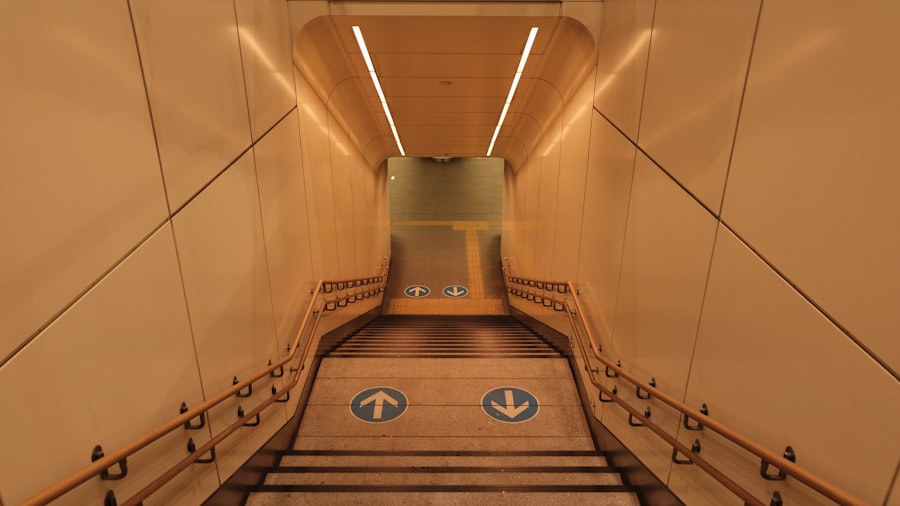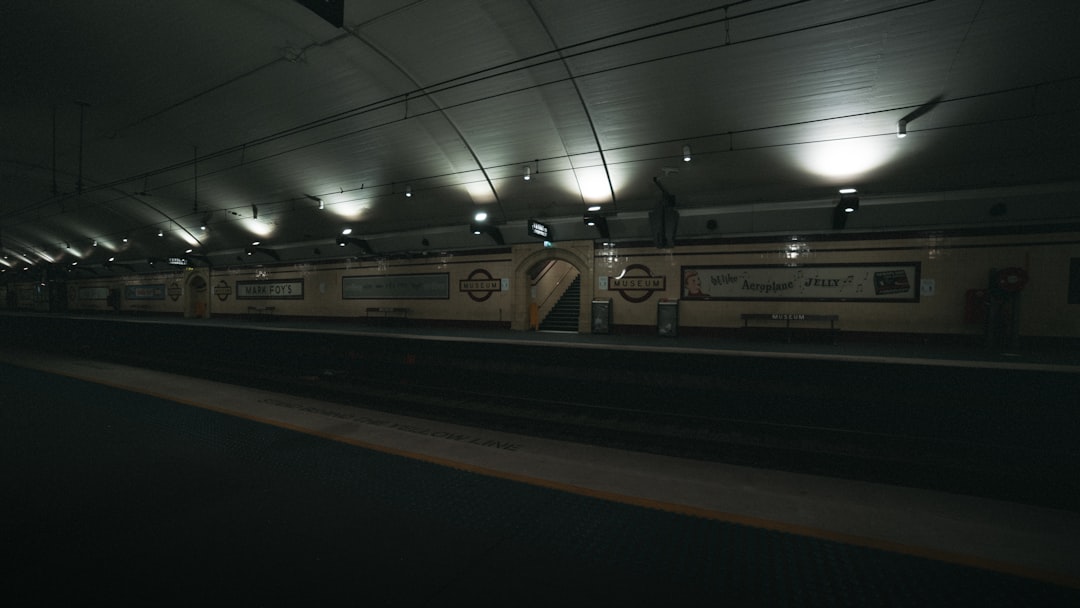Political gridlock in subway systems has a long and complex history, often reflecting broader societal tensions and conflicts. The origins of this phenomenon can be traced back to the early 20th century when cities began to expand rapidly, necessitating the development of efficient public transportation systems. As urban populations swelled, the demand for subways grew, leading to intense debates among city planners, politicians, and the public about funding, design, and management.
In many cases, these discussions devolved into partisan battles, with different factions vying for control over resources and decision-making processes. This early gridlock set a precedent for future conflicts, as competing interests often stalled progress on essential infrastructure projects. As cities evolved, so too did the political landscape surrounding subway systems.
The post-World War II era saw a significant shift in priorities, with many governments focusing on automobile infrastructure rather than public transit. This shift was not merely a matter of preference; it was deeply intertwined with political ideologies and economic interests. The rise of suburbanization led to a decline in investment in urban transit systems, resulting in a legacy of neglect that would haunt many subway networks for decades.
Political gridlock became a recurring theme as various stakeholders struggled to reconcile the need for modernization with the realities of budget constraints and competing agendas.
Key Takeaways
- Political gridlock in subway systems has a long history, with examples dating back to the early 20th century.
- Commuters bear the brunt of political gridlock, facing delays, overcrowding, and unreliable service.
- Political parties play a significant role in subway system gridlock, often prioritizing their own agendas over the needs of commuters.
- Economic consequences of political gridlock in subway systems include lost productivity, decreased property values, and increased maintenance costs.
- Special interest groups can influence subway system gridlock through lobbying efforts and funding campaigns.
The Impact of Political Gridlock on Commuters
The consequences of political gridlock in subway systems are felt most acutely by commuters who rely on these networks for their daily travel. When political disagreements delay necessary upgrades or expansions, commuters face increased congestion, longer wait times, and deteriorating service quality. This situation can lead to frustration and dissatisfaction among riders, who may feel that their needs are being overlooked in favor of political maneuvering.
As a result, many commuters are left with no choice but to endure subpar conditions or seek alternative modes of transportation, which can further exacerbate traffic issues in urban areas. Moreover, the impact of political gridlock extends beyond mere inconvenience; it can also have significant implications for public health and safety. Overcrowded subway cars and stations can create environments conducive to the spread of illness, while aging infrastructure may pose safety risks to passengers.
In times of crisis, such as during natural disasters or public health emergencies, the inability to swiftly implement necessary changes can hinder evacuation efforts and exacerbate the situation. Thus, the ramifications of political gridlock are not only logistical but also deeply intertwined with the well-being of urban populations.
The Role of Political Parties in Subway System Gridlock

Political parties play a crucial role in shaping the dynamics of subway system governance and the resulting gridlock. Often, party ideologies influence their stance on public transportation funding and policy priorities. For instance, conservative parties may advocate for reduced government spending on public transit, favoring private sector solutions instead.
In contrast, progressive parties typically push for increased investment in public transportation as a means to promote social equity and environmental sustainability. These differing perspectives can lead to significant clashes during budget negotiations or policy discussions, resulting in stalemates that hinder progress. Additionally, party loyalty can exacerbate gridlock as elected officials prioritize party agendas over collaborative solutions.
When political leaders are more focused on maintaining their party’s power than addressing the needs of their constituents, essential projects may be delayed or abandoned altogether. This partisanship can create an environment where compromise becomes increasingly difficult, further entrenching the cycle of gridlock. As a result, the effectiveness of subway systems often becomes a casualty of political maneuvering rather than a reflection of genuine public need.
The Economic Consequences of Political Gridlock in Subway Systems
| City | Population | Length of Subway System (km) | Annual Ridership |
|---|---|---|---|
| New York City | 8,336,817 | 368 | 1,727,000,000 |
| London | 8,982,000 | 402 | 1,357,000,000 |
| Tokyo | 13,515,271 | 304 | 3,163,000,000 |
The economic ramifications of political gridlock in subway systems are profound and multifaceted. Delays in infrastructure development can stifle economic growth by limiting access to jobs and services for urban residents. When subway systems fail to expand or modernize due to political disputes, businesses may struggle to attract customers or employees who rely on public transportation.
This stagnation can lead to decreased economic activity in affected areas, ultimately impacting local tax revenues and public services. Furthermore, the costs associated with maintaining outdated infrastructure can be exorbitant. Aging subway systems often require more frequent repairs and maintenance, diverting funds that could be used for expansion or improvement projects.
Political gridlock can exacerbate this issue by preventing necessary investments from being made in a timely manner. As a result, cities may find themselves trapped in a cycle of declining service quality and increasing operational costs, which can further deter investment and economic development.
The Role of Special Interest Groups in Subway System Gridlock
Special interest groups wield significant influence over the political landscape surrounding subway systems, often contributing to gridlock through their lobbying efforts and advocacy campaigns. These groups may represent various stakeholders, including labor unions, environmental organizations, and business associations, each with its own agenda and priorities. While their involvement can bring important issues to light, it can also complicate decision-making processes by introducing competing interests that must be reconciled.
In many cases, special interest groups may engage in tactics that exacerbate political gridlock by mobilizing public opinion against certain projects or funding initiatives. For example, environmental groups may oppose subway expansions that they perceive as harmful to local ecosystems, while labor unions may advocate for specific job protections that complicate negotiations. This fragmentation of interests can lead to protracted debates and delays in decision-making, ultimately hindering progress on essential infrastructure improvements.
Case Studies of Subway Systems Affected by Political Gridlock

Several prominent subway systems around the world have experienced significant political gridlock that has hindered their development and modernization efforts. One notable example is New York City’s Metropolitan Transportation Authority (MTA), which has faced chronic funding issues exacerbated by political infighting among state and city officials. Despite the city’s pressing need for upgrades and expansions to accommodate its growing population, disagreements over budget allocations have led to delays in critical projects such as signal modernization and station renovations.
Another case is Los Angeles’ Metro system, which has struggled with political gridlock stemming from competing interests among local governments and community organizations. Efforts to expand light rail lines have often been stalled by disputes over land use and funding priorities. As a result, commuters have faced prolonged delays in accessing efficient public transportation options that could alleviate traffic congestion throughout the region.
Potential Solutions to Political Gridlock in Subway Systems
Addressing political gridlock in subway systems requires innovative solutions that foster collaboration among stakeholders while prioritizing the needs of commuters. One potential approach is the establishment of bipartisan task forces dedicated to identifying common goals and developing consensus-driven strategies for infrastructure investment. By bringing together representatives from various political parties and interest groups, these task forces could facilitate open dialogue and promote shared understanding of the challenges facing subway systems.
Additionally, implementing transparent decision-making processes can help build trust among stakeholders and reduce the likelihood of gridlock. By involving community members in discussions about proposed projects and funding allocations, policymakers can ensure that diverse perspectives are considered while also fostering a sense of ownership among constituents. This participatory approach could lead to more informed decisions that reflect the needs of the community while minimizing partisan conflicts.
The Role of Public Opinion in Influencing Political Gridlock
Public opinion plays a pivotal role in shaping the political landscape surrounding subway systems and can either mitigate or exacerbate gridlock. When citizens express strong support for public transportation initiatives, elected officials may feel compelled to prioritize these projects despite partisan divides. Grassroots movements advocating for improved transit options can mobilize public sentiment and create pressure on policymakers to act decisively.
Conversely, negative public perception regarding subway systems—often fueled by frustrations over service quality or safety—can lead to decreased political will to invest in improvements. If constituents view public transportation as an ineffective or unreliable option, politicians may hesitate to allocate resources toward these initiatives due to fears of backlash during elections. Thus, fostering positive public opinion about subway systems is essential for overcoming political gridlock and ensuring sustained investment in infrastructure.
The Environmental Impact of Political Gridlock in Subway Systems
The environmental implications of political gridlock in subway systems are significant and multifaceted. Delays in expanding or modernizing transit networks can hinder efforts to reduce greenhouse gas emissions associated with automobile use. As cities grapple with increasing traffic congestion and air pollution levels, effective public transportation options become crucial for promoting sustainable urban development.
Moreover, when political disputes prevent investment in eco-friendly technologies—such as energy-efficient trains or renewable energy sources—subway systems miss opportunities to enhance their environmental performance. The failure to prioritize sustainable practices not only undermines climate goals but also perpetuates reliance on fossil fuels within urban transportation networks. Therefore, addressing political gridlock is essential for advancing environmentally responsible solutions that benefit both commuters and the planet.
The Role of Infrastructure Investment in Alleviating Political Gridlock
Infrastructure investment is a critical component in alleviating political gridlock within subway systems. By committing resources toward modernization efforts—such as upgrading aging tracks or implementing advanced signaling technology—governments can demonstrate their commitment to improving public transportation services while addressing pressing commuter needs. Such investments not only enhance operational efficiency but also signal a willingness to collaborate across party lines for the greater good.
Furthermore, strategic investments can create jobs and stimulate local economies, generating additional support for public transit initiatives among constituents who recognize the tangible benefits associated with improved infrastructure. By framing infrastructure investment as an opportunity for economic growth rather than merely an expenditure, policymakers can foster bipartisan support that transcends traditional political divides.
The Future of Subway Systems in the Face of Political Gridlock
The future of subway systems amid ongoing political gridlock remains uncertain but holds potential for transformative change if stakeholders prioritize collaboration over conflict. As urban populations continue to grow and climate concerns intensify, the need for efficient public transportation options will only become more pressing. By embracing innovative solutions—such as technology-driven approaches to project management or community engagement strategies—policymakers can work toward overcoming entrenched gridlock.
Ultimately, the success of subway systems will depend on their ability to adapt to evolving societal needs while navigating complex political landscapes. By fostering a culture of cooperation among diverse stakeholders and prioritizing sustainable investments in infrastructure, cities can pave the way for more resilient transit networks that serve as vital lifelines for commuters now and into the future.
In recent years, the political gridlock surrounding the expansion and maintenance of subway systems has become a significant issue in urban planning. This gridlock often results in delayed projects and increased costs, affecting millions of daily commuters. A related article on this topic can be found on MyGeoQuest, which discusses the broader implications of infrastructure delays and the political challenges that accompany them. For more insights, you can read the full article by visiting mygeoquest.
com/sample-page/’>this page.
WATCH THIS! The Real Cost of NYC Living: Your Wallet, Sanity, and Subway Survival Skills
FAQs
What is the political gridlock in the subway system?
The political gridlock in the subway system refers to the situation where political disagreements and conflicts hinder the effective functioning and improvement of the subway infrastructure and services.
What are the causes of political gridlock in the subway system?
The causes of political gridlock in the subway system can include disagreements over funding, competing political priorities, bureaucratic inefficiencies, and lack of consensus among political stakeholders.
How does political gridlock affect the subway system?
Political gridlock can lead to delays in infrastructure upgrades, maintenance issues, service disruptions, and overall deterioration of the subway system. It can also result in inadequate funding for necessary improvements and expansions.
What are the potential solutions to political gridlock in the subway system?
Potential solutions to political gridlock in the subway system may involve bipartisan cooperation, increased transparency and accountability in decision-making processes, and prioritizing the long-term needs of the subway system over short-term political gains. Additionally, public-private partnerships and innovative funding mechanisms could also help alleviate political gridlock.
